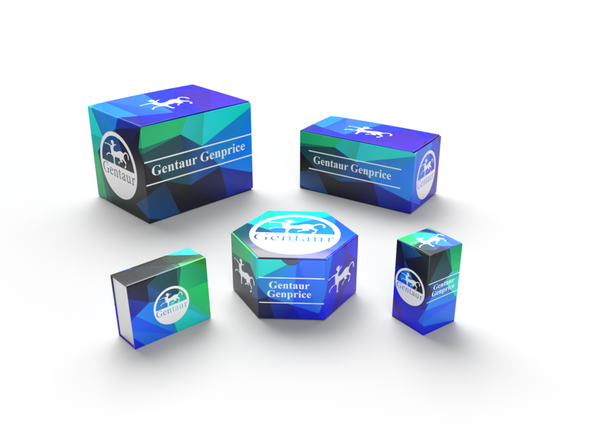Description
EPS15 Antibody | 61-119 | Gentaur UK, US & Europe Distribution
Host: Rabbit
Reactivity: Human
Homology: Predicted species reactivity based on immunogen sequence: Mouse
Immunogen: This EPS15 antibody is generated from rabbits immunized with a KLH conjugated synthetic peptide between 840-870 amino acids from the C-terminal region of human EPS15.
Research Area: Signal Transduction
Tested Application: WB
Application: For WB starting dilution is: 1:1000
Specificiy: N/A
Positive Control 1: N/A
Positive Control 2: N/A
Positive Control 3: N/A
Positive Control 4: N/A
Positive Control 5: N/A
Positive Control 6: N/A
Molecular Weight: 99 kDa
Validation: N/A
Isoform: N/A
Purification: This antibody is prepared by Saturated Ammonium Sulfate (SAS) precipitation followed by dialysis
Clonality: Polyclonal
Clone: N/A
Isotype: Rabbit Ig
Conjugate: Unconjugated
Physical State: Liquid
Buffer: Supplied in PBS with 0.09% (W/V) sodium azide.
Concentration: batch dependent
Storage Condition: Store at 4˚C for three months and -20˚C, stable for up to one year. As with all antibodies care should be taken to avoid repeated freeze thaw cycles. Antibodies should not be exposed to prolonged high temperatures.
Alternate Name: Epidermal growth factor receptor substrate 15, Protein Eps15, Protein AF-1p, EPS15, AF1P
User Note: Optimal dilutions for each application to be determined by the researcher.
BACKGROUND: EPS15 is involved in cell growth regulation, possibly via the regulation of mitogenic signals and control of cell proliferation. EPS15 also participates in the internalization of ligand-inducible receptors of the receptor tyrosine kinase (RTK) type, in particular EGFR. Potential interaction partners include AP2A2, STN2, EPN1, and CRK via its SH3-binding sites. EPS15 is ubiquitously expressed. Phosphorylation on Tyr-849 is involved in the internalization of EGFR. EPS15 is not required for membrane translocation after EGF treatment or for targeting to coated pits, but essential for a subsequent step in EGFR endocytosis. This protein is involved in a t (1;11) (p32;q23) chromosomal translocation in acute leukemias causing fusion to the trithorax (MLL or HRX) gene product which contains DNA-binding motifs resulting in a rogue activator protein. Structurally, EPS15 contains 2 EF-hand calcium-binding domains, 3 EH domains, and 2 ubiquitin-interacting motif (UIM) repeats.






